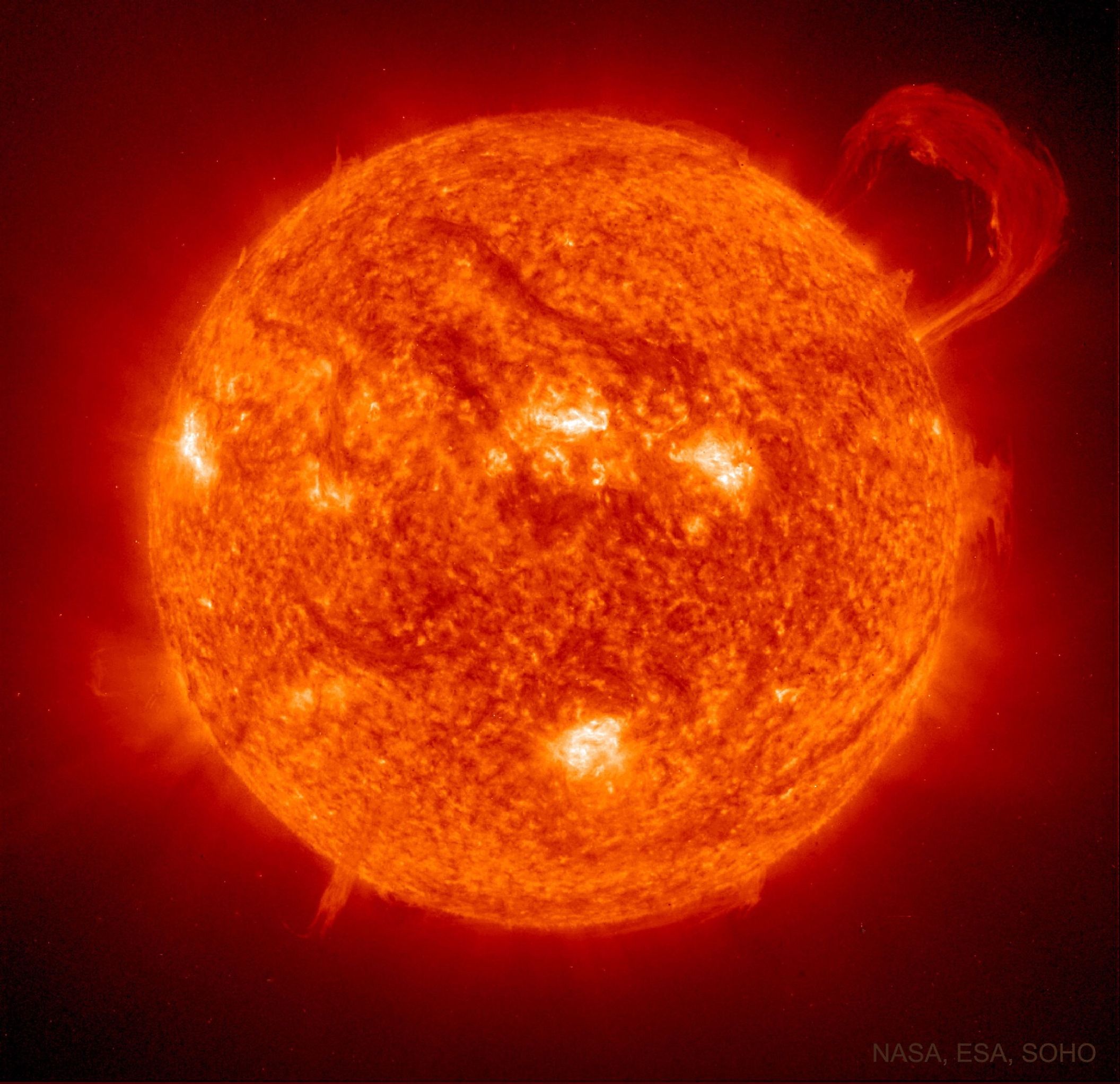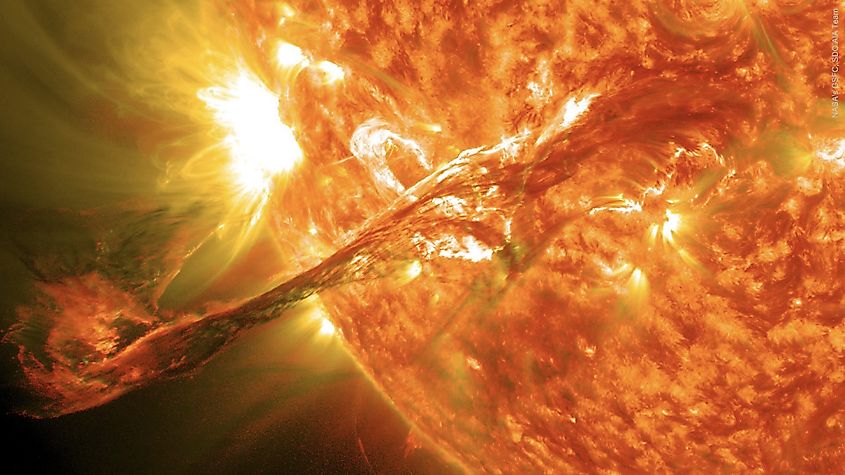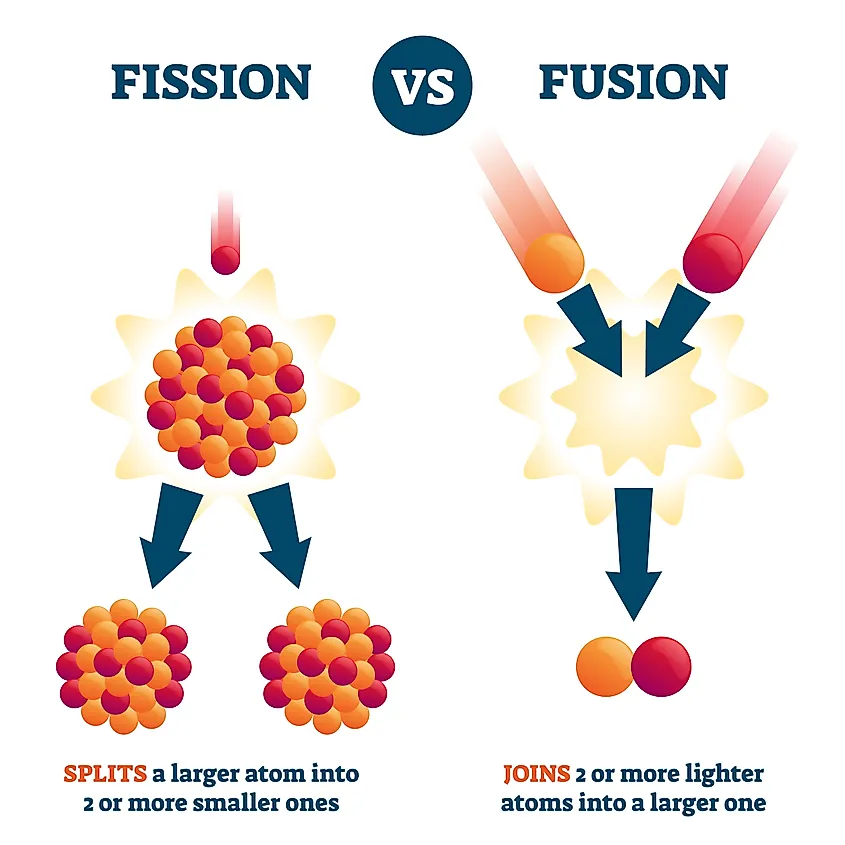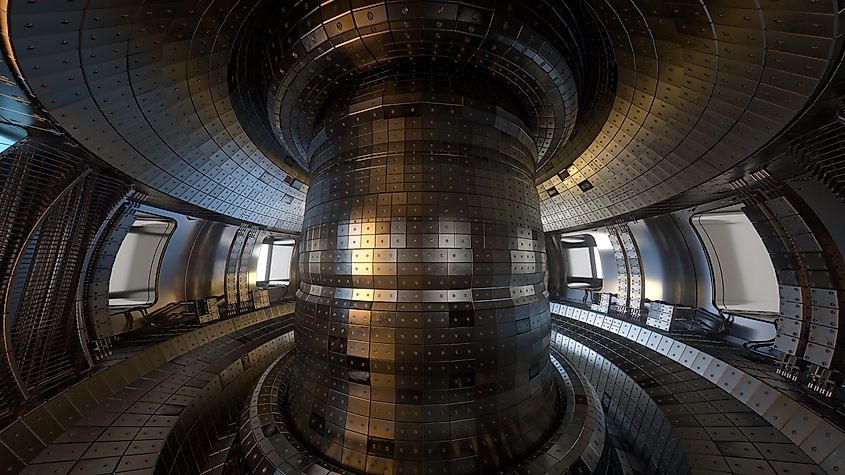
What Is Nuclear Fusion?
Nuclear fusion is the process by which atomic nuclei fuse together to form heavier nuclei, releasing a tremendous amount of energy in the process. The universe itself is largely powered by nuclear fusion as it is the process that powers the stars. Without nuclear fusion, stars could not exist. What is nuclear fusion and will humanity ever be able to utilize it in energy production?
How Nuclear Fusion Works

Nuclear fusion can only occur under very extreme temperatures and pressures. The temperature at which nuclear fusion can occur is 100-million degrees Celsius. That’s why nuclear fusion tends to only occur within the cores of stars. High temperatures are required for atomic nuclei to move at high speeds so that they can stick together upon impact, while higher pressures make sure nuclei stay within a relatively small area so that fusion can occur. For example, pressures and temperatures within the core of the sun are so high that individual hydrogen nuclei fuse together. A hydrogen nuclei is a single proton, and within the core of every star, these protons strike one another and fuse together. One of the protons will decay into a neutron upon impact, resulting in the formation of what’s called deuterium, which is just a hydrogen nuclei that also contains a neutron. When two deuterium nuclei fuse together, they produce helium, which has two protons and two neutrons. Interestingly, not all of the deuterium is being converted into helium. For example, the sun fuses around 620-million metric tons of hydrogen into 616-million metric tons of helium every second. That four million difference is released as energy in the form of an alpha particle and electromagnetic radiation.
Nuclear fusion results in a process known as nucleosynthesis, wherein every element up to iron is formed within the cores of the most massive stars. Although hydrogen fusion is what powers stars, every star only contains a finite amount of hydrogen. As hydrogen is fused into helium, the star will begin to fuse helium into even heavier elements such as oxygen, carbon, and nitrogen. The mass of a star will determine which elements will form. The higher a star’s mass, the higher the temperatures and pressures in its core. Generally, high mass stars will continue the fusion process until the formation of iron. The fusion of elements lighter than iron will produce vast amounts of energy, yet the fusion of iron requires more energy than it releases. Thus iron is an energy absorber rather than an energy emitter. Once iron forms in a star’s core, it quickly runs out of energy and collapses under its own gravity, eventually exploding as a supernova.
Fusion vs Fission: What’s The Difference?

Both nuclear fusion and fission have similar sounding names, yet they are two entirely different ways of producing energy. Fusion is the process by which individual nuclei fuse together and release energy. Meanwhile, fission is the process by which unstable, radioactive elements are broken apart to release energy. While fusion generally deals with light elements such as hydrogen and helium, fission uses radioactive material such as uranium and plutonium. Furthermore, fission creates radioactive waste as a byproduct, while the fusion of hydrogen only releases helium as a byproduct. Fusion is also a far more energetic process than fission.
Will Humans Ever Use Fusion For Energy?

Humanity still largely relies on the use of fossil fuels to meet its energy needs. The production of fossil fuels in the last century has exploded as the human population has grown exponentially. Although fossil fuels have resulted in some nations growing their economies and they have given humanity access to vast amounts of energy, there are obvious downsides to relying on them for energy. Things like climate change, global conflicts, and the eventual depletion of fossil fuel reserves are all issues associated with their use. Although renewable energy sources are on the rise, none are nowhere near close enough to replacing fossil fuels as humanity’s primary source of energy. However, what if there was a clean form of energy that could supply us with unlimited amounts of energy virtually forever? Look no further than nuclear fusion.
Nuclear fusion offers humanity a potential solution to all of its energy needs and problems. For example, the sun produces more energy from nuclear fusion every second than humanity would over the course of tens of thousands of years. Hydrogen is also a very common element on Earth, and only small amounts would be required to generate vast amounts of energy. The only byproduct of nuclear fusion is helium, which happens to be an inert gas that could be captured and used in other industrial processes. There is no nuclear waste, and there are no greenhouse gases. Fusion energy would also be extraordinarily cheap as there would simply be so much energy to use. Although humanity has managed to produce nuclear fusion in laboratories, scientists have not yet developed a fusion plant capable of generating energy. Rather, fusion laboratories absorb more energy than they produce, yet that may change in the not too distant future. Scientists are consistently breaking records for the amount of energy produced in fusion reactors, and it may only be a matter of time before we have a full fledged fusion reactor capable of producing energy.











